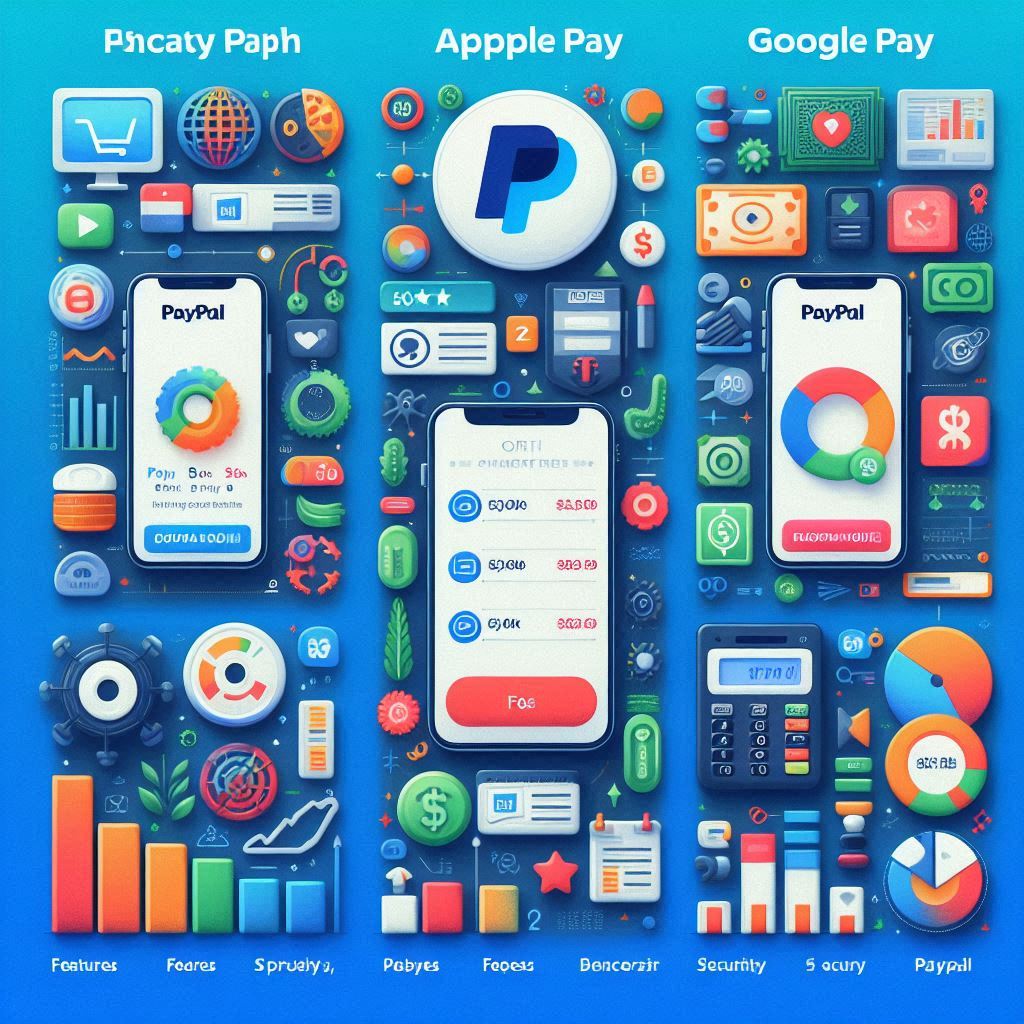
Top Payment Services in the UK: A Comparative Analysis
Introduction
Overview of the UK Payment Landscape
The UK’s payment landscape is characterized by a rapid evolution driven by technological advancements and shifting consumer expectations. The rise of mobile payments, e-wallets, and contactless transactions are reshaping how businesses and consumers interact. This section examines the current trends and their implications on both financial institutions and users.

Evolution of Payment Services
Payment services in the UK have seen a revolutionary shift from traditional banking methods towards digital solutions. This journey from brick-and-mortar branches to online platforms has paved the way for fintech innovations. Understanding this evolution helps in appreciating the complexities of modern payment systems and the regulatory frameworks developed to secure them.
Key Payment Services
Major Payment Platforms in the UK
This segment analyzes leading platforms such as PayPal, Stripe, and WorldPay, focusing on their market penetration, strategic partnerships, and the user base they cater to. These platforms have distinguished themselves through user-friendly interfaces, extensive functionality, and robust security measures.
Analysis of Market Leaders
We compare the features, benefits, and drawbacks of major payment services, providing a clear picture of their standings in the market. This analysis includes recent financial performance data, user reviews, and expert opinions on service reliability and customer support.
Niche Providers in the Market
Besides the giants, several niche payment services target specific demographics or service needs, such as TransferWise for international transactions and Klarna for “buy now, pay later” services. This section highlights their roles and unique value propositions in a competitive market.

Features of Payment Services
Security Features
In an era where cyber threats are rampant, security is a critical selling point for payment services. We delve into various technologies employed to safeguard transactions, including two-factor authentication, blockchain technology, and the use of biometric data for verification.
Ease of Use
A primary factor in the widespread adoption of any payment service is its ease of use. This subsection examines how user-friendly interfaces, quick setup processes, and customer support quality contribute to user satisfaction and retention.
Technological Innovations
The application of artificial intelligence in fraud detection and the use of machine learning for personalized services are transforming payment technologies. This part explores these innovations and their impact on service efficiency and security.

User Experiences
Consumer Satisfaction
Drawing from consumer surveys and feedback, this section provides real-world insights into what users love and criticize about their payment platforms. It highlights common issues faced by users and how service providers address these concerns.
Business Adoption
Businesses require robust, scalable payment solutions that can handle high volumes of transactions. This subsection looks at how different platforms cater to small businesses versus large enterprises and the integration challenges they face.
Technology Behind the Services
Infrastructure of Payment Systems
An exploration of the technical backbone of payment systems, including server architectures, encryption standards, and compliance with international payment protocols.
Compliance and Regulations
Payment services must navigate a complex landscape of financial regulations. This part covers GDPR, PSD2, and other relevant regulations, explaining their implications for both providers and consumers.
Comparative Analysis
Cost Efficiency
We analyze the transaction fees, membership costs, and other charges associated with each service, providing a comparative overview that helps users make cost-effective choices.
Accessibility
This section assesses the accessibility of various payment services across different devices and platforms, focusing on user access in remote or underserved regions.
Speed of Transactions
The speed at which transactions are processed is crucial for user satisfaction. This comparative analysis identifies the fastest services for different types of transactions.
Special Features
International Transactions
A detailed look at how payment services handle multi-currency transactions, offering insights into exchange rates, fees, and cross-border transaction support.
Integration Capabilities
The ability to integrate with other business systems can significantly enhance the utility of a payment service. This section evaluates the API support, compatibility, and ease of integration with other enterprise tools.
Future Trends
Emerging Technologies
Predictions on how blockchain, IoT, and further advancements in AI will shape the future of payment services in the UK.
Predictions for the UK Market
Based on current trends, this final part forecasts future shifts in the market, identifying potential new entrants and predicting changes in consumer preferences and technology adoption.
FAQ Section
- What are the most secure payment services available in the UK? The most secure payment services in the UK typically employ advanced security measures like end-to-end encryption, two-factor authentication, and real-time monitoring systems to protect users’ transactions. Prominent services such as PayPal, Stripe, and Barclays offer robust security protocols that comply with the latest UK and EU regulations.
- How do I choose the right payment service for my business? Choosing the right payment service for your business depends on several factors, including transaction fees, the nature of your transactions (domestic or international), integration capabilities with your existing systems, and customer service quality. It’s essential to evaluate how each service aligns with your business needs and volume of transactions.
- Can I use multiple payment services simultaneously? Yes, many businesses and individuals use multiple payment services to benefit from the unique features of each. Using multiple services can provide flexibility, improve customer experience, and serve as a backup in case one of the services experiences downtime.
- What should I consider for international transactions? For international transactions, consider the currency exchange rates offered, transaction fees, speed of processing, and the geographic coverage of the payment service. Services like TransferWise and Revolut offer competitive exchange rates and lower fees for international transactions compared to traditional banks.
- How are transaction fees calculated? Transaction fees can vary significantly between different payment services and typically depend on factors such as the amount of money being transferred, the type of transaction, and whether it is domestic or international. Most services charge a percentage of the transaction amount, and some may include a fixed fee.
- What technological innovations are shaping the future of payment services? Technological innovations such as blockchain for increased security and transparency, artificial intelligence for fraud detection and customer service, and contactless payments for faster and safer transactions are significantly shaping the future of payment services. These technologies help improve efficiency, reduce costs, and enhance the overall user experience.
- How do I handle compliance with regulations when using a payment service? To handle compliance, ensure that the payment service you choose adheres to all relevant regulations such as the Payment Services Directive (PSD2) in Europe, General Data Protection Regulation (GDPR), and other local compliance requirements. It’s advisable to consult with legal experts or compliance officers to understand the specific obligations for your business.
Conclusion
A summary of insights gathered throughout the article, emphasizing the importance of choosing the right payment service based on individual or business needs, and a forward look into the future of payment services in the UK.